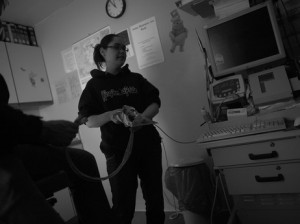For the past 12 years, the U.S. Department of Veteran Affairs (VA) has been helping veterans with chronic illnesses live more satisfying lives through its successful Care Coordination/Home Telehealth (CCHT) program. Telemedicine gives veterans the ability to maintain their independence, by giving them access to health care in their own communities. It allows those in remote and rural areas to receive often hard-to-find specialist care. The VA telehealth program has also cut patient bed days by an impressive 58% and patient readmission by 38%.
The VA began its telehealth program in 2000 to help veterans live independently in their own homes. Starting with a pilot program of 800 patients, CCHT used simple home telehealth technology that mainly helped patients monitor their medication. Since then the VA has continued to expand its reach and services, with over 500,000 patients receiving health care through telehealth programs in 2012. Of those, 119,000 received telehealth care right in their homes and 76,000 had telemental health consultations, which accounts for 35% of all mental health consultations in the past year.
For many veterans, being able to receive health care through telemedicine technology has really changed their quality of life. Robert Petzel, under secretary health at the VA relates the story of one veteran who used to have drive through 45 minutes of nightmare city traffic to see his counselor. With telemedicine, he is able to see his counselor through a video conference session from the comfort of his home, and get more out of his counselling sessions. Petzel says “We’ve interviewed him. He points out the fact that now he’s relaxed, in an environment he’s comfortable in, he’s not upset about the traffic and he’s getting infinitely — and he used the word infinitely — more out of his therapy sessions now that he doesn’t have to travel that distance.””
This long-running VA telehealth initiative was finally recognized this year by Hospitals and Hospital Networks, topping its list of Most Wired Hospitals in 2013. With so many benefits of telehealth, including cost savings, increased patient access to service, and excellent feedback from patients, the VA has continued to work hard to increase awareness and availability of health services through telehealth programs. Last year the VA eliminated the co-pay for veterans who chose to use telemedicine to see a providers. In addition, it has been rolling out other programs to broaden its telemedicine reach:
- Project SCAN-ECHO is a 3-year, $15 million pilot that will use video conference to train VA primary care providers in rural areas in specialty care. Based on the successful Project ECHO at the University of New Mexico, primary care providers will be able to discuss current cases with a panel of experts in 14 different fields. This gives patients the benefit of specialty care without having to travel long distances, and specialists can care for more patients by working with their primary care providers.
- The VA in collaboration with U.S. Department of Health & Human Services received a $983 K grant to expand telehealth in rural areas with the highest concentration of resident vets – Alaska, Virginia, and Montana. Funds will be used to improve access and coordination to telehealth services between the VA and private clinics and hospitals.
- The Veterans E-Health & Telemedicine Support Act of 2013, or VETS Act, is a recently introduced bipartisan bill to expand telemedicine in the VA. It would allow credentialed VA health providers to practice across state lines without having a license in each state.




